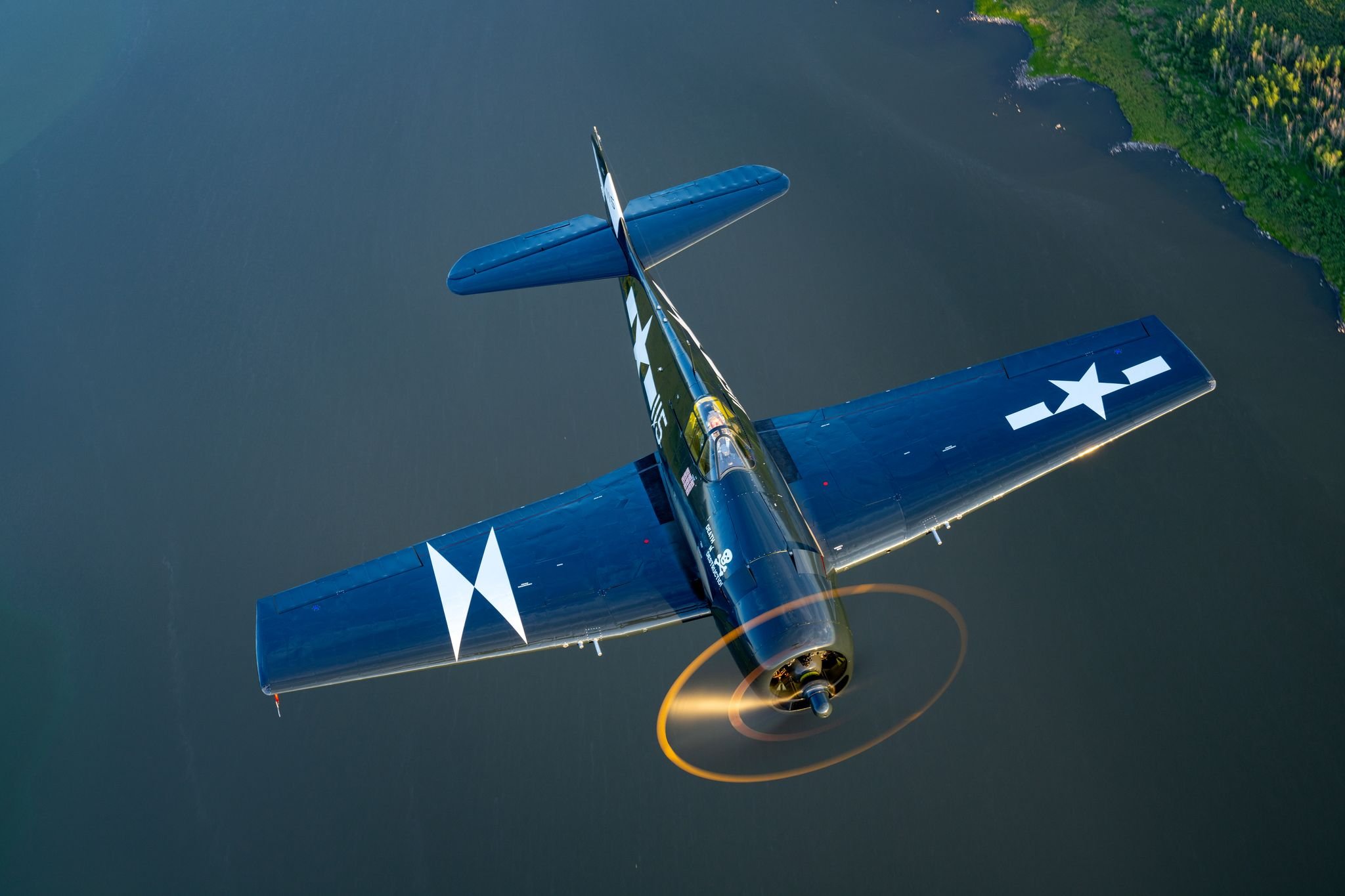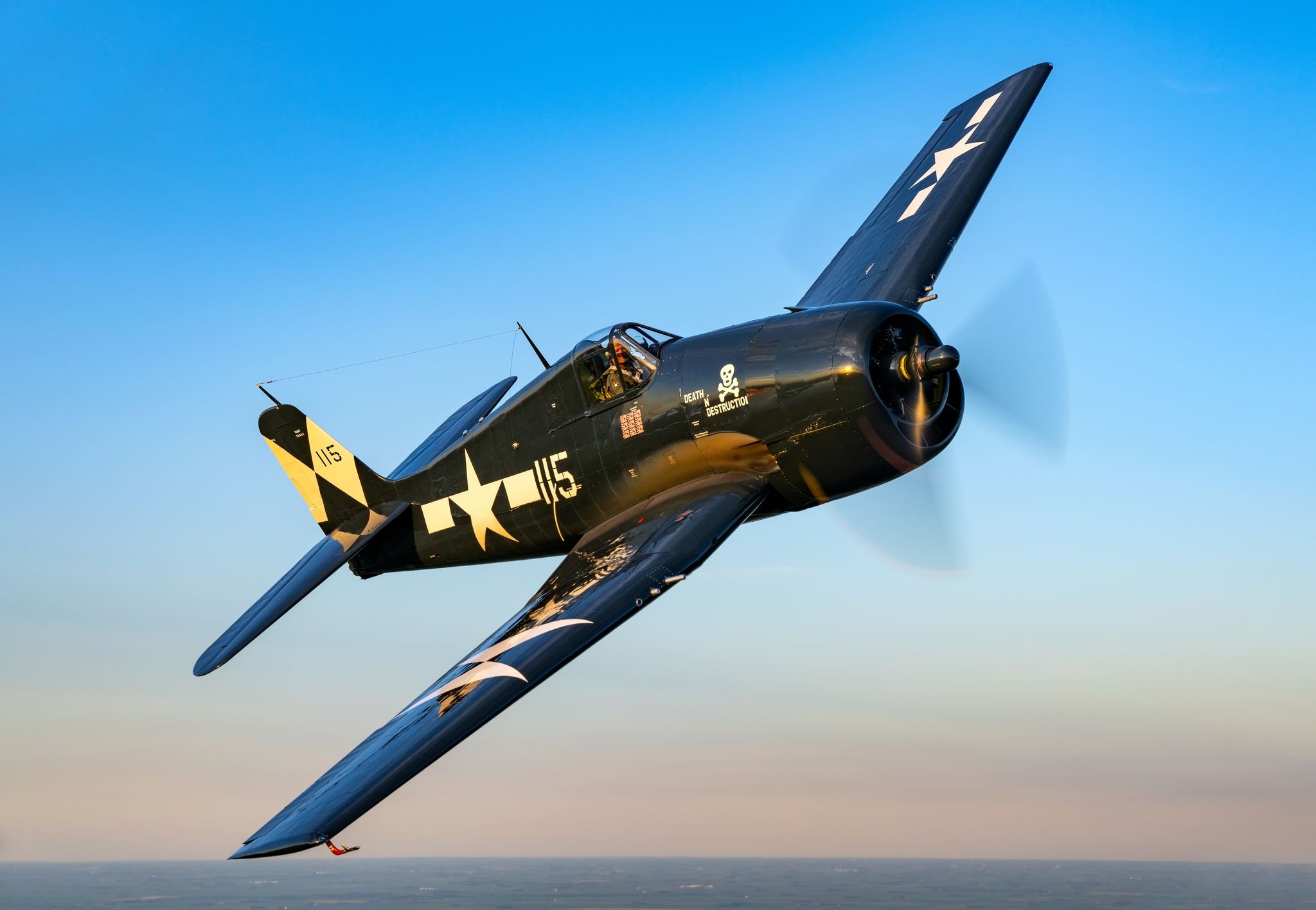F6F-5 Hellcat
“Death N’ Destruction”
The Grumman F6F Hellcat, developed during World War II, served as a prominent general-purpose fighter, particularly on aircraft carriers. Designed as an improvement over the F4F Wildcat, the Hellcat was crafted to effectively counteract the threat posed by enemy aircraft, especially the Japanese Mitsubishi A6M Zero. Its design featured a powerful Pratt & Whitney R-2800 Double Wasp engine, capable of producing 2,000 horsepower, which provided the Hellcat with remarkable speed and agility. The aircraft's robust structure and excellent serviceability made it a favored choice among pilots, leading to its impressive combat record.
Equipped with six .50 caliber machine guns and the capability to carry bombs or torpedoes, the Hellcat could engage in both air-to-air combat and ground attack missions. Its operational effectiveness was underscored by the fact that it accounted for a significant percentage of enemy aircraft shot down during the war, solidifying its reputation as one of the most successful carrier-based fighters in aviation history. The F6F Hellcat's combination of firepower, durability, and versatile operational capabilities made it a vital asset to the United States Navy and Marine Corps in the Pacific theater, playing a crucial role in achieving air superiority against the Axis powers.
The Hellcat first saw action against the Japanese on September 1, 1943 when fighters off USS Independence shot down a Kawanishi H8K “Emily” flying boat. Soon after, on 23 and 24 November, Hellcats engaged Japanese Aircraft over Tarawa, shooting down a claimed 30 Mitsubishi Zeros for the loss of one F6F Hellcat. Over Rabaul, New Britain, on 11 November 1943, Hellcats and F4U Corsairs were engaged in day long missions with many Japanese aircraft including A6M Zeros, claiming nearly 50 aircraft. The F6F Hellcat series was designed to take damage and get the pilot safely back to base. A bullet-resistant windshield and a total of 212 lb of cockpit armor was fitted, along with armor around the oil tank and oil cooler. A 250 US gal self-sealing fuel tank was fitted in the fuselage. Currently, there are just seventeen assembled F6F Hellcats in the world. Of those, only six are airworthy, but only three fly.
The Restoration of Death N’ Destruction
The Hellcat was in the early stages of restoration at Fighter Rebuilders in Chino, California, when Evan and Don first met. In 2017, Evan Fagen, along with the renowned WWII Navy Ace Donald McPherson, began formulating detailed plans to meticulously paint serial number 72534 to closely resemble Don’s aircraft from the Second World War, which was named Death N’ Destruction. The Hellcat was indeed in its early restoration phase at Fighter Rebuilders in Chino, California, at the time when Evan and Don crossed paths for the first time. It took four years of dedicated restoration efforts and growing anticipation, but the final product proved to be exceptionally worth the wait. Fighter Rebuilders in Chino, California, truly did a phenomenal job on the entire restoration process. The attention to detail displayed in their work is incredibly impressive and faithfully replicates the craftsmanship of the original design. Finally, the Hellcat arrived home at Fagen Fighters WWII Museum in the spring of 2021 after making an essential and meaningful pitstop in Adams, Nebraska, to pay respect to Don and his community.





